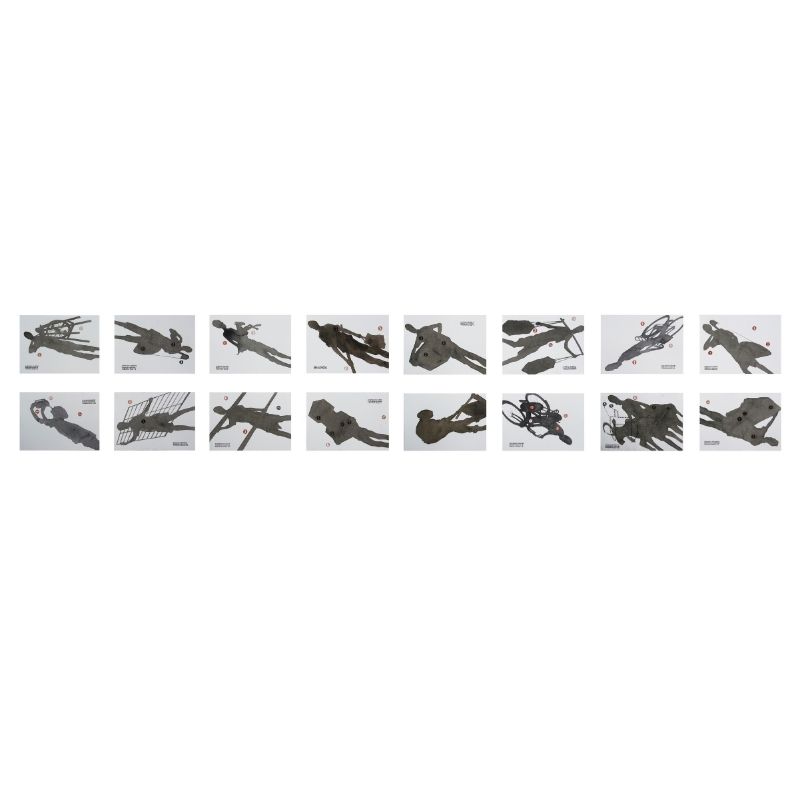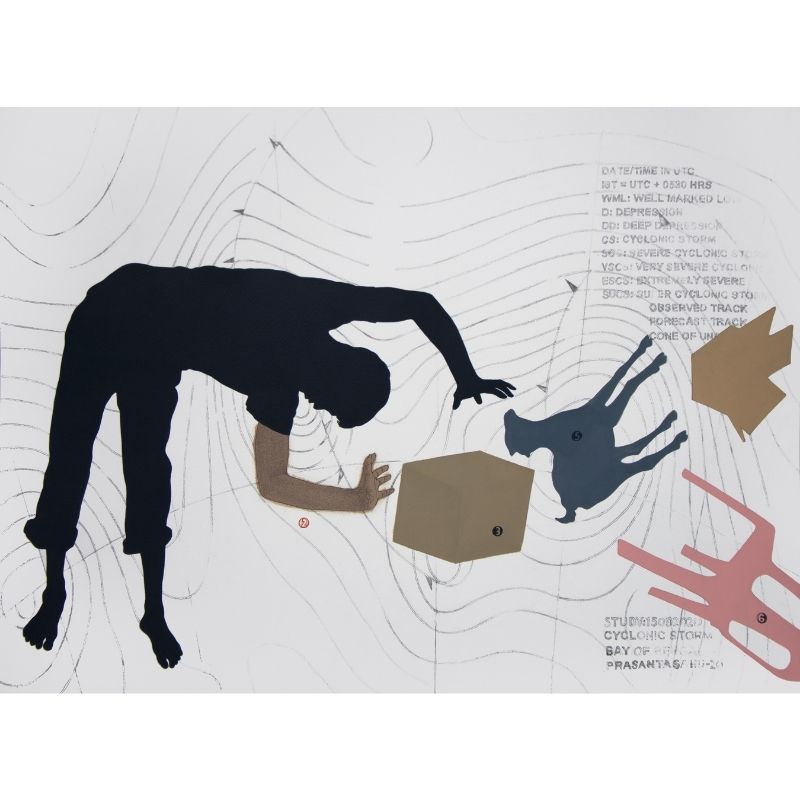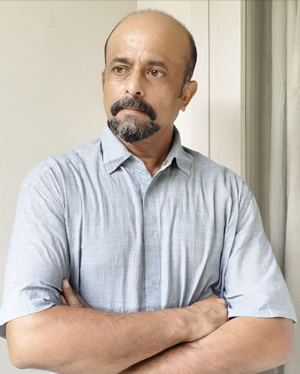
Over five years, Prasanta Sahu has been working on what he calls “the unknown multitudes,” the marginalized population of peasants and urban workers, who provide essential services to us but remain unacknowledged and under-represented in society. Concerned with farming and agriculture in the context of modern life and the representation of daily laborers of various occupations in the suburban localities, his works in the exhibition revolve around the particular notion of the study, understood not as a regular academic practice– a drawing or sketch done in preparation for a finished piece – but something close to the anthropological idea of case-study: the contextual analysis of the everyday life and actions of an individual, group, or community that exhibits the morphology of the social structure.



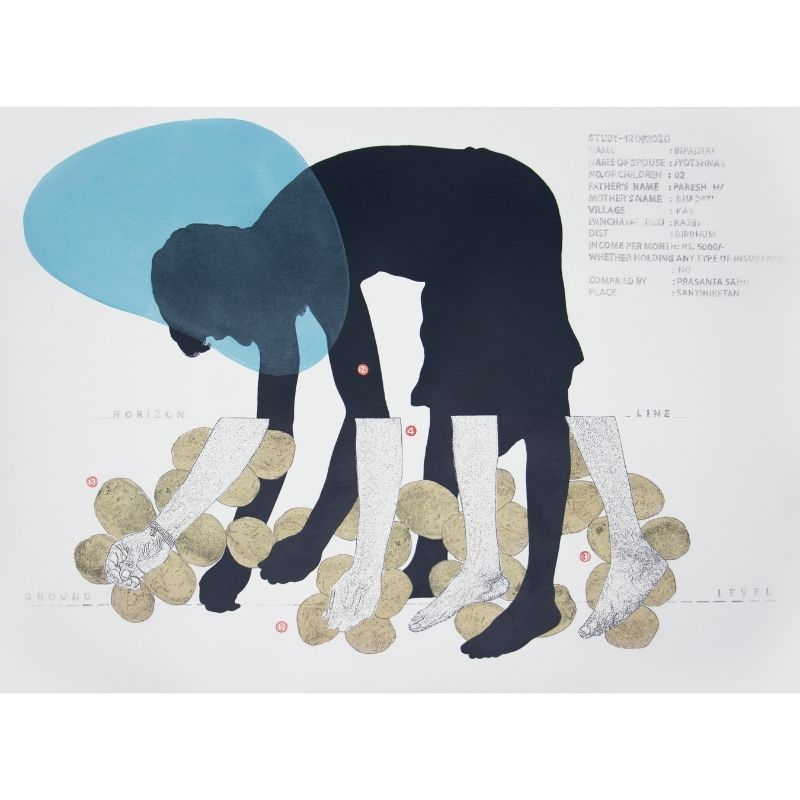
Rooted in the empiricism of “being there,” Sahu’s work involves the scientific method of photo documentation, field notes and drawings, and interviews which he later reworks in his studio. He prefers to see himself as a compiler, as opposed to an original creator, who reconstructs reality, drawing on elements and styles from diverse scientific and artistic disciplines and discourses. In his work, this process of citation operates on multiple levels, subverting the idea of painting as a medium of invention and originality. The strategic juxtaposition of the visual and textual sings, of diagrammatic and realistic images, and of technically produced and transferred images that relate to the “industrial aesthetic” and hand-drawn ones create hybridity that defies the linearity of the visual discourse, challenging the ideological and institutional demands placed on art.
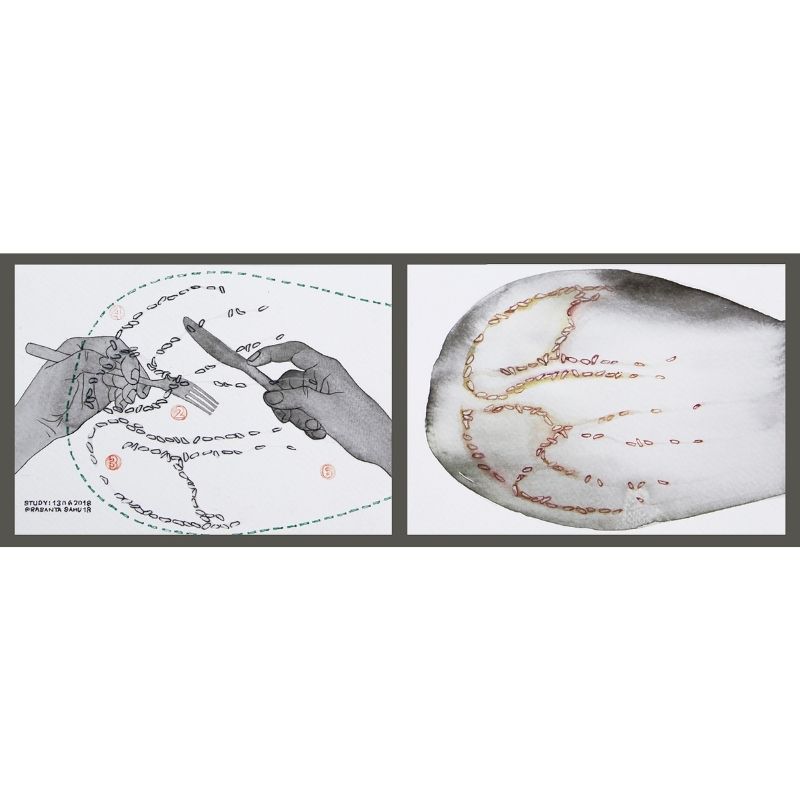
The human body holds the centre stage in many of Prasanta Sahu’s major works. In the exhibition, he deals mostly with the marginalized male farmers and daily laborers, representing them not merely as the physical bodies in action, but a contested site of biopolitics. Reducing the bodies to their bare silhouette, Sahu highlights the economy of their gestures, underlines the non-figurative quality of his works, which are documents, as opposed to portrait or descriptive representation. He is not only interested in visual effect and compositional arrangement of his work but also confers upon them a socio-political status.

A trained artist, Sahu also has a background in electrical engineering. His work thus shows both the pictorial intelligence and imagination of an artist and the analytic approaches of the scientific disciplines. There are contradictions, and his work encompasses them. More often than not, the fieldwork documents, data table, and photographs veer abruptly from a scientifically oriented daily account to an avant-garde oneiric montage of images, texts and numbers. Instead of being enclosed in a singular aesthetic idea, the works, composite, fragmentary, and hybrid, compel an interrogative meaning.
